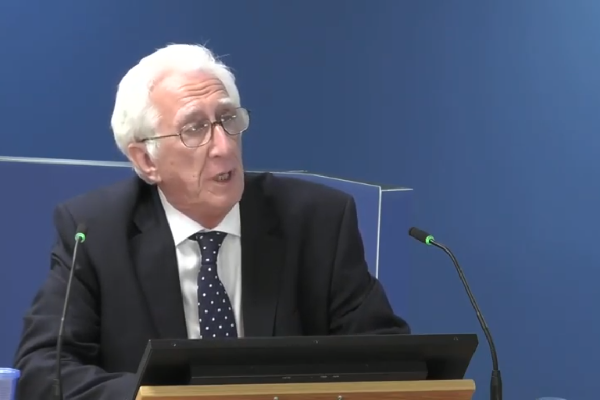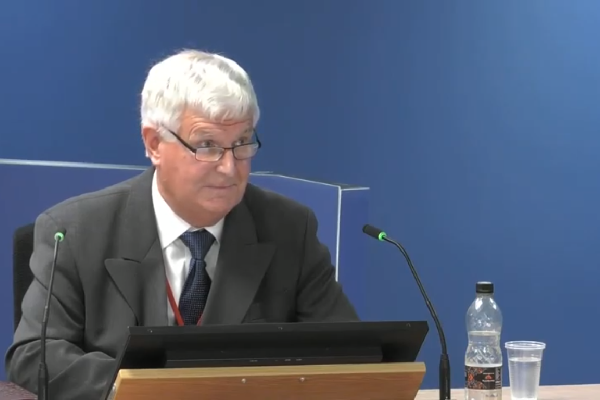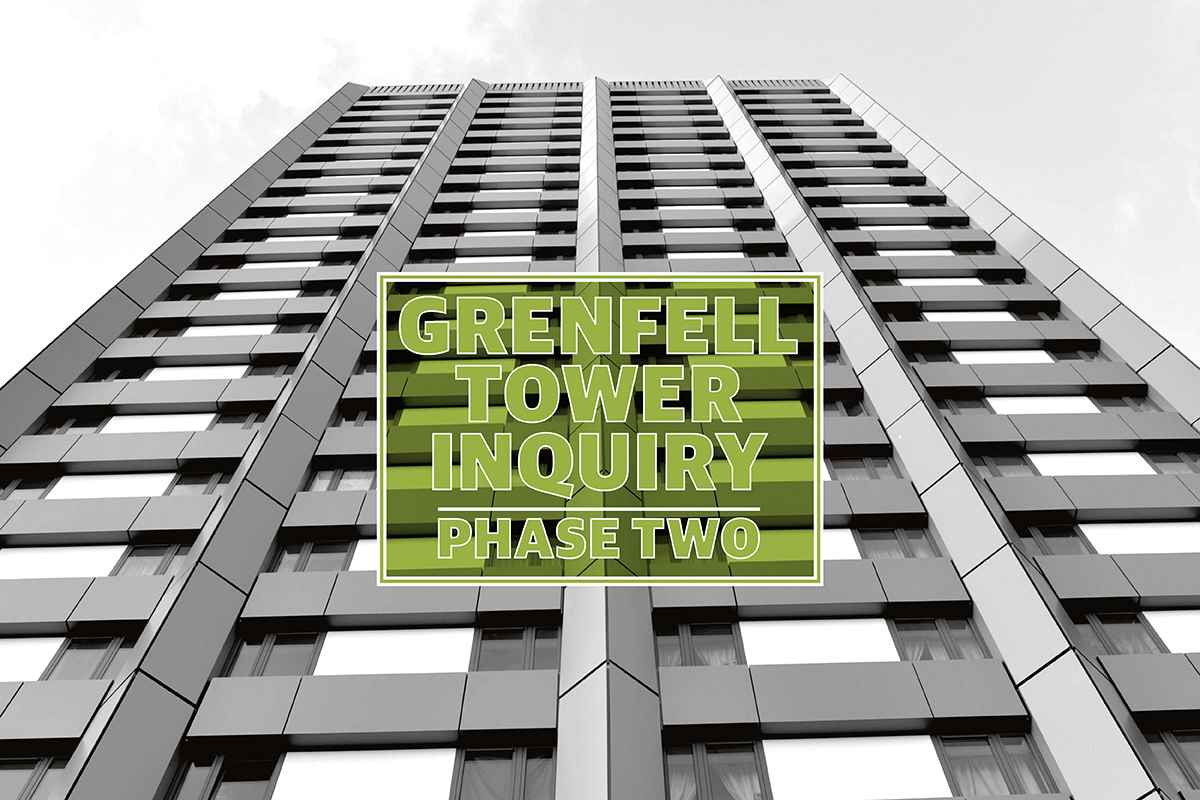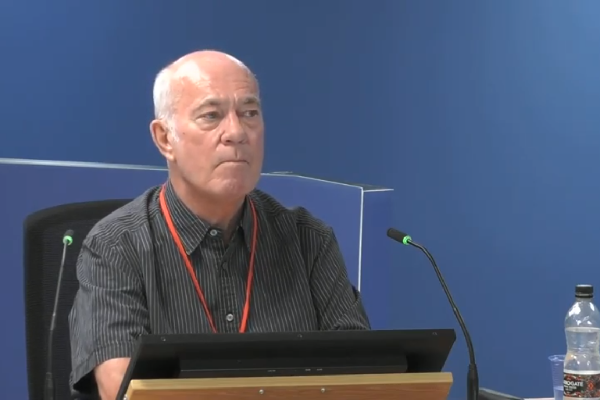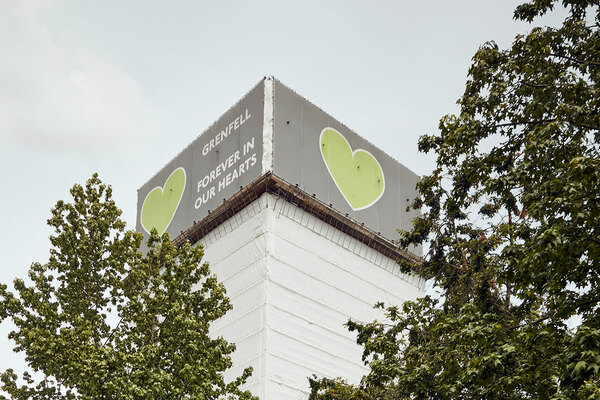Government set no standard for competence of fire risk assessors to reduce ‘burdens on business’
The government declined to set standards for the competence of fire risk assessors because of its focus on “deregulation” and reducing “burdens on business”, an expert witness has told the Grenfell Tower Inquiry.
Colin Todd, a fire engineer and the head of a consultancy that has produced government-endorsed guidance, is giving his view this week on the adequacy of risk assessments carried out on Grenfell Tower.
These were done by a sole-trader called Carl Stokes, who had spent most of his career working for the fire service in Berkshire and Oxfordshire before carrying out a short training course in order to work as a risk assessor.
The inquiry previously heard that he included ‘post-nominals’ after his name on his CV which referred to non-existent qualifications, something Mr Todd said risked “significantly misleading” clients.
But asked about Mr Stokes’ training and qualifications in general, Mr Todd explained that there were no statutory requirement for the competence of a fire risk assessor.
“There was no statutory requirement for competence. And that wasn’t an oversight, that was intentional government policy,” Mr Todd said.
He explained that he had helped produce industry guides on what determined a competent risk assessor, but this had never been made mandatory.
“Not only was it not mandatory, but government resisted all calls for it to be made mandatory – very, very positively resisted it,” he said.
“The government were very clear that to have required fire risk assessors to be competent, it would imply to the business community that they’d have to go out and buy in the services of a specialist.
“And the Fire Safety Order was brought in in the name of reducing burdens on business. So it would be a little bit difficult for the government to follow a party line which says we’re reducing burdens on business and by the way, you’re going to have to pay for a service that you’ve got free before from the Fire and Rescue Service.”
The Regulatory Reform (Fire Safety) Order was first introduced in 2005 by Tony Blair’s Labour government and was the first time risk assessments were required for residential blocks of flats.
Mr Todd said that Mr Stokes’ use of post-nominals to refer to non-existent qualifications would “in my opinion, significantly mislead clients and potential clients as to his qualifications”, he said in his report.
However, he added that Mr Stokes “education, training and experience were suitable for the purpose of carrying out [risk assessments] for Grenfell Tower”.
Mr Stokes has previously said he did not understand what the post-nominals were off and was simply trying to refer to training courses he had attended.
Mr Stokes’ risk assessment made no detailed assessment of the safety of the cladding used on Grenfell Tower, but Mr Todd did not criticise this in his report.
He said that “at the time of Mr Stokes’ [assessments], it was certainly not custom and practice for fire risk assessors to consider the fire performance of external wall construction or cladding, particularly in blocks of flats”.
Queried about this conclusion today, he said his interpretation of the 2005 legislation was that it did not cover the external walls of the building, meaning cladding fell outside the scope of the risk assessments.
He told the inquiry that this understanding was held “if not universally, very close to universally” within the industry of fire risk assessors.
However, he was challenged over this by counsel to the inquiry Richard Millett QC who pointed out that while the legislation specifically excludes ‘domestic premises’, it does not expressly exclude external walls or even contain the phrase ‘common parts’.
“Did anybody ever ask themselves what the basis of excluding the external wall from the scope of the [legislation] actually was?” asked Mr Millett.
“I would doubt that, sir,” said Mr Todd.
“What I’m getting from you is that people assumed, is this right, that the external wall was outside the scope of the [legislation] without really thinking about it?” added Mr Millett.
“That may be a little unfair to some colleagues in the profession, but I think it’s probably a reasonable assertion,” replied Mr Todd.
Mr Todd was part of the team which drafted PAS 79 – the British Standard that provided guidance on how to carry out a risk assessment – which did not recommend assessment of the external facade.
He emphasised today that the view of government after the fire at Grenfell Tower, as well as senior figures within the London Fire Brigade, was that the legislation did not apply to external walls.
Mr Todd also had ultimate responsibility for government-endorsed guidance written by a team at his consultancy in 2011, Fire Safety in Purpose Built Flats, which has been widely used by the social housing sector.
Witnesses from Kensington and Chelsea Tenant Management Organisation (KCTMO) have said they followed this guidance in the years before the fire.
That guidance included a warning on cladding and called for “particular attention” to be paid to rainscreen cladding systems, warning that “the use of combustible cladding materials and extensive cavities can present a risk”.
Mr Todd said that this advice “was not aimed at the risk assessor”. “This was more general guidance, that would also help the [building owner] or just anyone giving advice,” he said. “We wanted to get it out there that this was a hazard, whether it was in scope of legislation or not.”
Mr Stokes’ fire risk assessment of Grenfell Tower gave no detailed consideration of the cladding system added during the refurbishment, although he did recommend to KCTMO staff that they seek assurances over its “fire rating” and that it was signed off by building control.
He later asserted that it was “fire-rated” in an assessment written towards the end of the refurbishment in 2016.
The phrase ‘fire-rated’ has no specific meaning in UK regulations and in his report Mr Todd criticised this wording, saying that Mr Stokes “appears to be stating that… the cladding would have adequate performance if exposed to fire, which is clearly incorrect”.
The recently passed Fire Safety Act extends the scope of fire risk assessments to cover cladding. Ministers have described this as a “clarification” to the existing legislation, but Mr Todd queried this wording in his report.
“I respectfully suggest that this ‘clarification’ is somewhat disingenuous on the part of the government and that the ‘clarification’… is little more than a euphemism for ‘reinterpretation’ or ‘extension of scope’,” he wrote.
Mr Todd continues his evidence tomorrow.
Sign up for our weekly Grenfell Inquiry newsletter
Each week we send out a newsletter rounding up the key news from the Grenfell Inquiry, along with the headlines from the week
Already have an account? Click here to manage your newsletters
